Korean oxidized / fermented tea (paryo-cha) or yellow tea
In recent years, increasing numbers of tea-makers in
Korea have begun producing various kinds of oxidized tea (paryo-cha) in
addition to the more traditional green tea / roasted tea (deokeum-cha).
This is perhaps in part because many people prefer to drink a variety
of teas, not always green tea, and also because the drying of paryo-cha
is simpler. The basic process varies considerably from one maker to
another but the paryo-cha I saw being produced at Gucheung-am hermitage
above Hwaeom-sa temple is probably as characteristic as any.

Gucheung-am hermitage (Above)

1. Freshly picked leaves are spread thinly on trays that are placed away from direct sunlight and left to wilt for 24 hours.
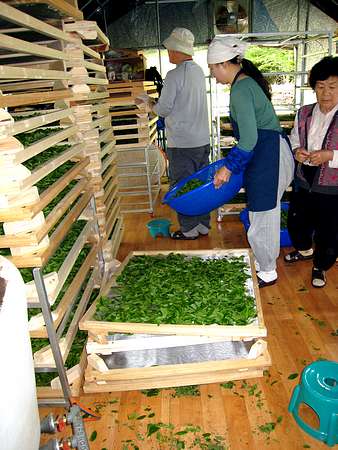
2. Clumps of the wilted leaves are rubbed vigorously on rough straw
mats for a considerable period, bruising the leaves and driving out a
proportion of the juices. A team of 5-6 people may pass the
increasingly moist masses of leaves from one to another, each rubbing
them for a few minutes in turn. The entire batch takes about 2 hours to
rub fully. Much of the moisture is absorbed into the mat.

3. By the end of the circuit the leaves
are moist, brownish and massed together.
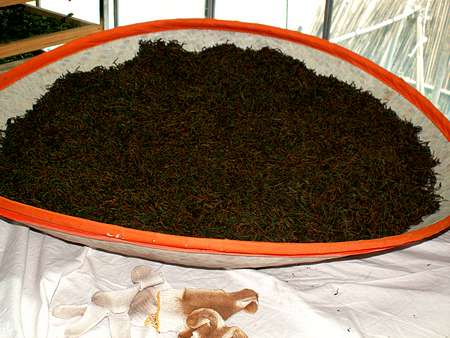
4. The rubbed leaves are placed in large pots and allowed to go on
oxidizing and fermenting for a further 24 hours. A layer of dry
rice-straw at the bottom allows the tea to breathe.
5. The leaves are then separated and spread very thinly on paper on
a really well-heating Korean-style floor (40 degrees C) to dry.

6. The dried leaves are returned to the large pot for another day
or two before being packed. Some makers keep them in closed pots for several
months before packing.
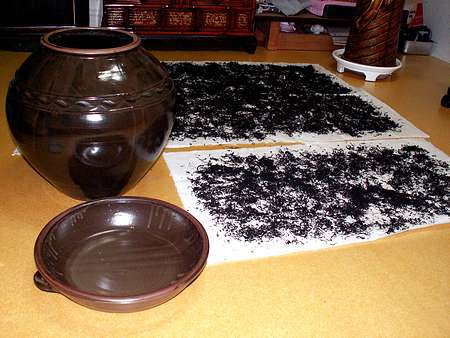
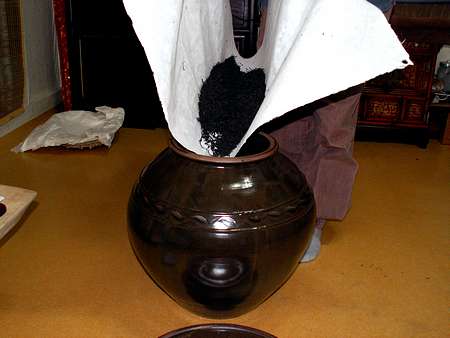
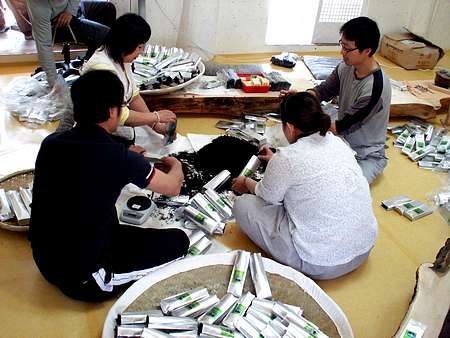
The resulting tea yields a reddish brew, sweet and fragrant to the
taste, unlike Chinese Oolongs except perhaps the Taiwanese Oriental
Beauty, closer to light red tea. It is warming to the body where green
tea is 'cooling' in its effect.

